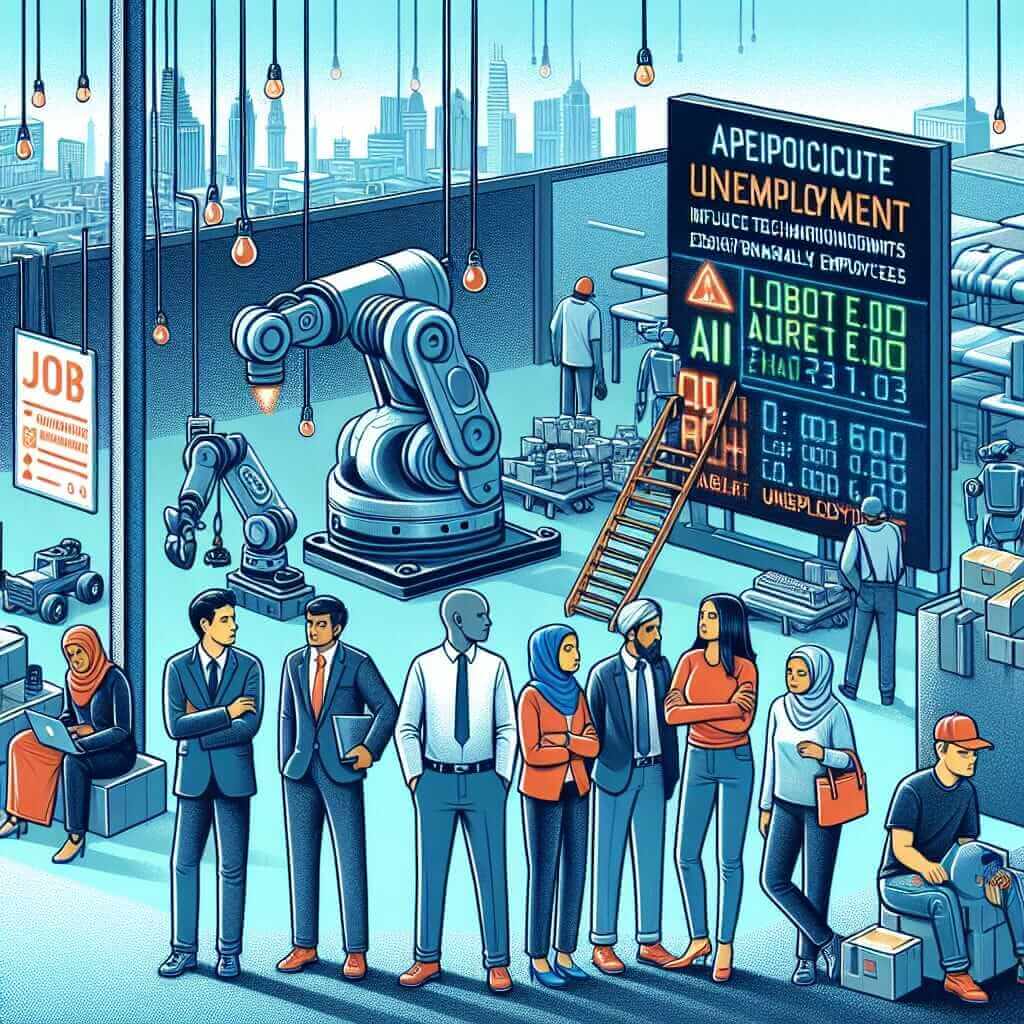The IELTS Reading test is an essential component of the IELTS exam, designed to evaluate your comprehension skills through a variety of texts. One topical subject that has appeared and is likely to reappear in IELTS exams is the economic impacts of technological unemployment. Understanding this topic can be beneficial, as it not only prepares you for potential reading passages but also broadens your general knowledge about significant current affairs.
In this article, we will explore a practice reading passage centered around the keyword “What are the economic impacts of technological unemployment?” and other related terms. We will also provide sample questions in various formats, answer keys with explanations, discuss common pitfalls, and share some valuable vocabulary and grammar points.
Practice Reading Passage: Economic Impacts of Technological Unemployment
The following reading passage is designed to reflect the kind of text you might encounter in the IELTS Reading section. This passage falls under the “Medium Text” category, providing a moderate level of difficulty.
The Economic Impacts of Technological Unemployment
Technological unemployment refers to the loss of jobs caused by technological advancements. While technology has historically been a driver of economic growth, its impact on employment levels has sparked significant debate. Technological unemployment can lead to both positive and negative economic impacts, which manifest across various sectors and demographics.
Positive Economic Impacts
Increased Productivity and Efficiency
One of the primary benefits of technological progress is the enhancement of productivity and efficiency. Advanced machinery and automation systems streamline manufacturing processes, reducing the need for manual labor. This, in turn, lowers production costs, allowing companies to offer products at more competitive prices. The savings generated can be reinvested into other areas, fostering innovation and economic growth.
Elevated Standards of Living
As companies save costs through automation and robotics, they can afford to increase wages for the remaining workforce. Additionally, lower production costs often translate to lower prices for consumers, thereby raising their purchasing power. Consequently, this leads to an overall improvement in the standard of living and can potentially address some aspects of economic inequality.
Negative Economic Impacts
Job Displacement
Despite its advantages, technological progress also leads to significant job displacement. Workers in roles that are easily automated, such as manufacturing and administrative tasks, are the most vulnerable. The loss of these jobs can result in higher unemployment rates, especially among low-skilled workers. This phenomenon creates a need for effective retraining programs to help displaced workers adapt to new roles.
Economic Inequality
Technological unemployment often exacerbates economic inequality. As high-skilled workers benefit from technological advancements, low-skilled workers face declining wages and job opportunities. The disparity between skilled and unskilled workers can widen the income gap, leading to social and economic tension.
Policy Measures and Solutions
To mitigate the adverse effects of technological unemployment, governments and organizations need to implement proactive measures. This includes investing in education, vocational training, and lifelong learning programs to equip the workforce with relevant skills. Additionally, policies supporting job creation in emerging sectors, such as green energy and technology, can help absorb the displaced workforce.
Conclusion
Technological unemployment presents a complex challenge. While it offers opportunities for economic growth and improved living standards, it also poses risks of job displacement and economic inequality. Addressing these challenges requires a multifaceted approach that combines policy intervention and ongoing education.
Sample Questions
Identifying Information (True/False/Not Given)
-
Technological unemployment generally leads to a decrease in the standard of living.
-
Automation technologies primarily displace high-skilled workers.
-
Governments are not responsible for addressing the negative impacts of technological unemployment.
Multiple Choice
-
What is one of the primary benefits of technological progress according to the text?
- A. Increased cost of production
- B. Elevated standards of living
- C. Reduced need for innovation
- D. Higher unemployment rates
-
According to the text, what can lower production costs result in?
- A. Higher wages for all workers
- B. Increased unemployment rates
- C. Lower prices for consumers
- D. Decreased economic inequality
Sentence Completion
- Advanced machinery and automation systems can streamline ____, reducing the need for manual labor.
- (Answer: manufacturing processes)
Summary Completion
Fill in the blanks with no more than two words from the passage.
-
Technological advancements can both ____ and negatively impact the economy. Positive impacts include increased ____ and efficiency, while negative impacts involve job displacement and increased ____ inequality.
- (Answers: positively, productivity, economic)
Answer Keys and Explanations
-
False – The passage states that technological advancements can lead to an “elevated standard of living”.
-
False – The passage indicates that low-skilled workers, rather than high-skilled workers, are more prone to job displacement.
-
False – The passage discusses the need for government and organizational policies to address technological unemployment.
-
B. Elevated standards of living – This answer is correct as it aligns with the benefits of technological progress described.
-
C. Lower prices for consumers – Lower production costs result in lower product prices for consumers, as mentioned in the passage.
-
manufacturing processes – This phrase directly fits the context of the sentence in the passage.
-
positively, productivity, economic – These words complete the summary accurately based on the text.
Common Pitfalls
Misreading Information
Often candidates misinterpret the information provided in the passage, leading to incorrect answers. Ensure to read carefully and correctly understand the context.
Ignoring Context Clues
Ignoring context clues provided in the passage can result in incorrect answers. Always consider the surrounding text to infer meanings accurately.
Vocabulary
- Automation (noun): The use of machinery and technology to perform tasks without human intervention.
- Displacement (noun): The act of displacing or moving something from its place.
- Reinvest (verb): To put money back into an investment or organizational fund.
- Inequality (noun): The state of being unequal, especially in terms of economic disparity.
Grammar Points
-
Relative Clauses: Used to provide additional information about a noun.
- Example: “Workers in roles that are easily automated, such as manufacturing and administrative tasks, are the most vulnerable.”
-
Passive Voice: Often used in formal writing to emphasize the action rather than the subject.
- Example: “The savings generated can be reinvested into other areas.”
Tips for Achieving High Scores
-
Practice Regularly: Consistent practice with various reading materials helps improve comprehension skills.
-
Build Vocabulary: Enhance your vocabulary to better understand and interpret the texts.
-
Time Management: Develop the ability to manage your time effectively during the test.
-
Mock Tests: Take regular mock tests to familiarize yourself with the format and identify areas for improvement.
-
Analyze Mistakes: Review incorrect answers to understand and learn from your mistakes.
 Economic impacts of technology
Economic impacts of technology
By following these guidelines and regularly practicing, you can significantly improve your reading skills and achieve a high score in the IELTS Reading test.


